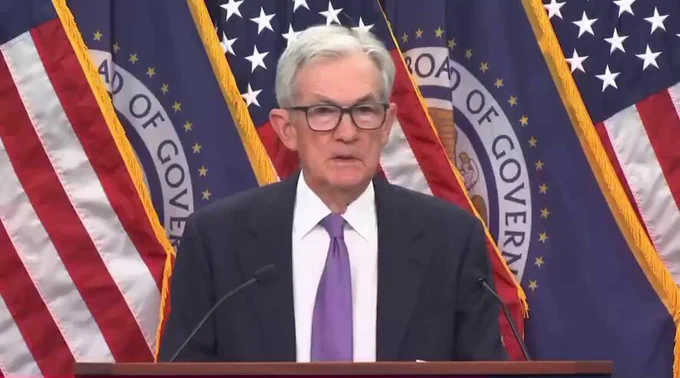Most people ignored the most important line from Powell.
He said that "at a certain point, you’ll want reserves to start gradually growing to keep up with the size of the banking system and the size of the economy."
That is not an official QE announcement.
But it does open the door for balance sheet expansion again.
Now the thesis:
If the Fed ends QT and starts net adding reserves in an environment where:
stocks are near highs
unemployment is low
inflation is above target
fiscal deficits are large
...then that is a classic late-cycle liquidity phase, and historically it has been very bullish for asset prices.
Now connect this with the long debt cycle logic (without naming anyone):
Public debt is very high.
Fiscal deficits are large and persistent.
Demand for long-dated Treasuries is limited at current yields.
In that situation, it becomes very tempting for the central bank to absorb more government debt and keep yields under control.
That is what people mean by monetising debt.
So the conditional setup is:
If we see three things together:
1. Fed balance sheet expanding again
2. Policy rates being cut or guided lower
3. Fiscal deficits staying large
→ Then we are in a monetary + fiscal easing phase that historically pushes risk assets much higher before it breaks.
Right now, we only have hints of (1), and the path for (2) and (3) is known.
What makes this even more important is the starting point.
Today:
Equity valuations are already elevated.
AI / tech multiples are high.
Private credit and capital markets are still active.
Credit spreads are tight, not stressed.
So if liquidity is added here, it is not fixing a broken market.
It is feeding a market that is already expensive.
This is where the bubble thesis comes from.
A bubble does not need a crash first.
A bubble needs:
cheap money
strong sentiment
and a good story (right now that’s AI, productivity, etc.)
Adding liquidity in that context tends to inflate prices further rather than normalise them.
Nov 8, 2025 · 9:21 AM UTC
Mechanically, if the Fed starts adding reserves in size:
Bank reserves rise
Funding stress in money markets falls
Real yields tend to drift lower
Valuation multiples on long-duration assets (tech, AI, growth, Bitcoin) usually expand
That is not opinion.
We have already seen that pattern in prior QE phases.
On top of that, you have the asset choice logic:
A 10y Treasury gives you a fixed yield (say ~4%).
Gold gives 0%.
Bitcoin gives 0%.
But if the expected inflation rate and money creation go up, the real return on bonds falls, while the relative appeal of scarce assets rises.
This is why gold and BTC often rally when people believe money printing is coming back.
There is also a timing lag.
When liquidity increases:
financial assets react quickly
consumer-price inflation reacts with a delay
So there is often a 6–12 month window where:
stocks, crypto, and commodities perform well
central banks still argue that inflation is manageable
This window is what traders often ride as the melt up, even though fundamentally it’s a fragile phase.
The risk comes later:
If balance sheet expansion becomes large and fiscal deficits stay high,
inflation can re-accelerate.
At that point, the central bank is forced to:
slow purchases
raise rates again
or at least stop cutting
That’s when the bubble usually ends.
But that is not the starting point.
The starting point is usually very bullish.
So the thesis here is simple and conditional:
The Fed has not announced QE.
It has signalled that reserve growth is possible and likely at some point.
If that signal turns into actual balance sheet expansion in this macro backdrop, history says:
→ risk assets can experience a very strong final upside phase
→ especially AI, growth, commodities, gold, and Bitcoin.
Until we actually see:
the balance sheet turning up clearly,
rate cuts alongside that,
and deficits staying large,
this remains a setup, not a guarantee.
But if all three line up,
then yes, easing into this kind of market
is exactly the environment where the biggest bubbles and the biggest gains are created.
That’s the core of the thesis.






